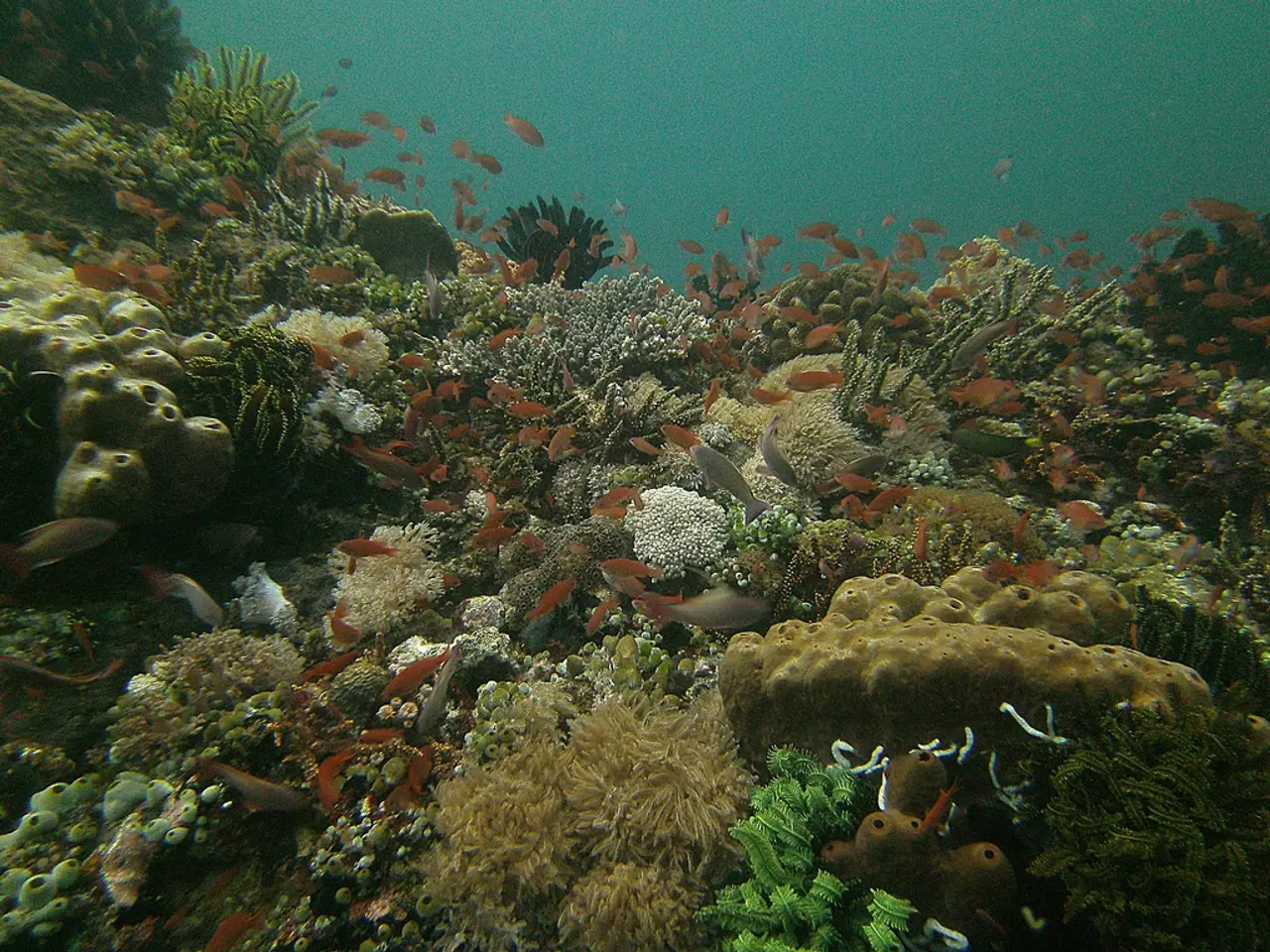Ancient Prehistoric Sawfish Unearthed in Florida's Deep Seas After A Million Years
The smalltooth sawfish, a critically endangered species in Florida waters, is currently facing serious threats including a recent abnormal die-off linked to a peculiar illness causing erratic behavior and death. However, focused recovery efforts are actively underway by researchers, conservation groups, and volunteers.
In 2025, multiple rescues of trapped sawfish have been successfully conducted in Tampa Bay and surrounding areas. For example, a 6-foot sawfish trapped in a tidal pond near Bishop Harbor Pond in Palmetto was repeatedly caught by a young fisherman, Kane Mcree, who alerted officials. A rescue team including the U.S. Sawfish Recovery Team safely captured and released the sawfish into open waters after tagging it with an acoustic transmitter to monitor its movements.
The die-off since December 2023 has killed nearly 65 sawfish mostly in the Florida Keys, with scientists investigating the unusual sickness. Winter and habitat confinement risks increase the urgency of the rescues to improve survival chances, as smalltooth sawfish are not adapted to restricted enclosed waters like tidal pools.
Under U.S. law, the smalltooth sawfish is listed as endangered under the Endangered Species Act of 1973, establishing legal protections and prioritizing conservation actions. Research continues on the species' age, growth, maturity, and natural mortality to better inform recovery strategies.
Conservation efforts involve collaboration between wildlife agencies, conservation organizations such as Havenworth Coastal Conservation, biologists, and local community members. These efforts focus on rescuing trapped animals, tagging and tracking movements, understanding disease causes, and protecting critical habitats in Florida waters.
In 1992, Florida implemented protections for the smalltooth sawfish, and in 2003, it became the first native marine fish to be listed on the Endangered Species Act. Professor Jim Gelsleichter's field survey classes offer students hands-on experience in researching sharks and rays, including sawfish.
After two decades of conservation efforts, signs of a smalltooth sawfish comeback were observed, with tagged adult sawfish moving up the East Coast and baby sawfish being spotted in Tampa Bay. However, a setback came in 2023 when a mysterious illness hit the smalltooth sawfish population, causing at least 54 confirmed deaths, mostly in the Florida Keys.
Scientists are asking for the public's help in reporting sightings of sawfish. Sightings can be reported online at SawfishRecovery.org or by calling 844-4SAWFISH. Details to report include size, location, date, time, and water depth. Emails can also be sent to [email protected].
The commercial fisherman who was caught severing the rostrum of a live 12-foot sawfish in 2019 faced probation, fines, and community service for his crime. The National Oceanic and Atmospheric Administration states that the Bahamas and other places off the coast of Central America are also home to smalltooth sawfish.
Conservation efforts to save the smalltooth sawfish have been led by organizations such as the Sawfish Recovery Team, Florida State University, and the Florida Fish and Wildlife Conservation Commission. The 11-foot sawfish, nearly 10 feet long, was caught in the St. Marys River but did not survive despite the efforts of researchers over 20 days. The smalltooth sawfish is an ancient species that belongs to the elasmobranch group, which includes rays, skates, and sharks. Unlike most fish, sawfish have no bones or skeletons and are held together by cartilage.
The fight to save the smalltooth sawfish continues, with the hope that these efforts will lead to a recovery of the species in Florida waters.
- Biodiversity is significantly impacted as the smalltooth sawfish, a critically endangered species, faces a mysterious illness causing erratic behavior and death in Florida waters.
- Science and ecology research are of utmost importance to understand the unusual sickness faced by the smalltooth sawfish and to develop effective conservation strategies.
- Collaboration among researchers, conservation groups, volunteers, wildlife agencies, and local community members is key to the recovery of the smalltooth sawfish, as evidenced by the successful rescues of trapped sawfish in Tampa Bay and surrounding areas.
- Lifelong learning is fostered through educational programs such as Professor Jim Gelsleichter's field survey classes at Florida State University, offering students hands-on experience in researching sharks and rays, including sawfish.
- Climate change and adaptation to restricted enclosed waters remain challenges for the smalltooth sawfish survival, as winter and habitat confinement risks increase the urgency of conservation efforts.
- To aid in conservation efforts, the public is encouraged to report sightings of sawfish online (SawfishRecovery.org) or by phone (844-4SAWFISH), providing details like size, location, date, time, and water depth.




